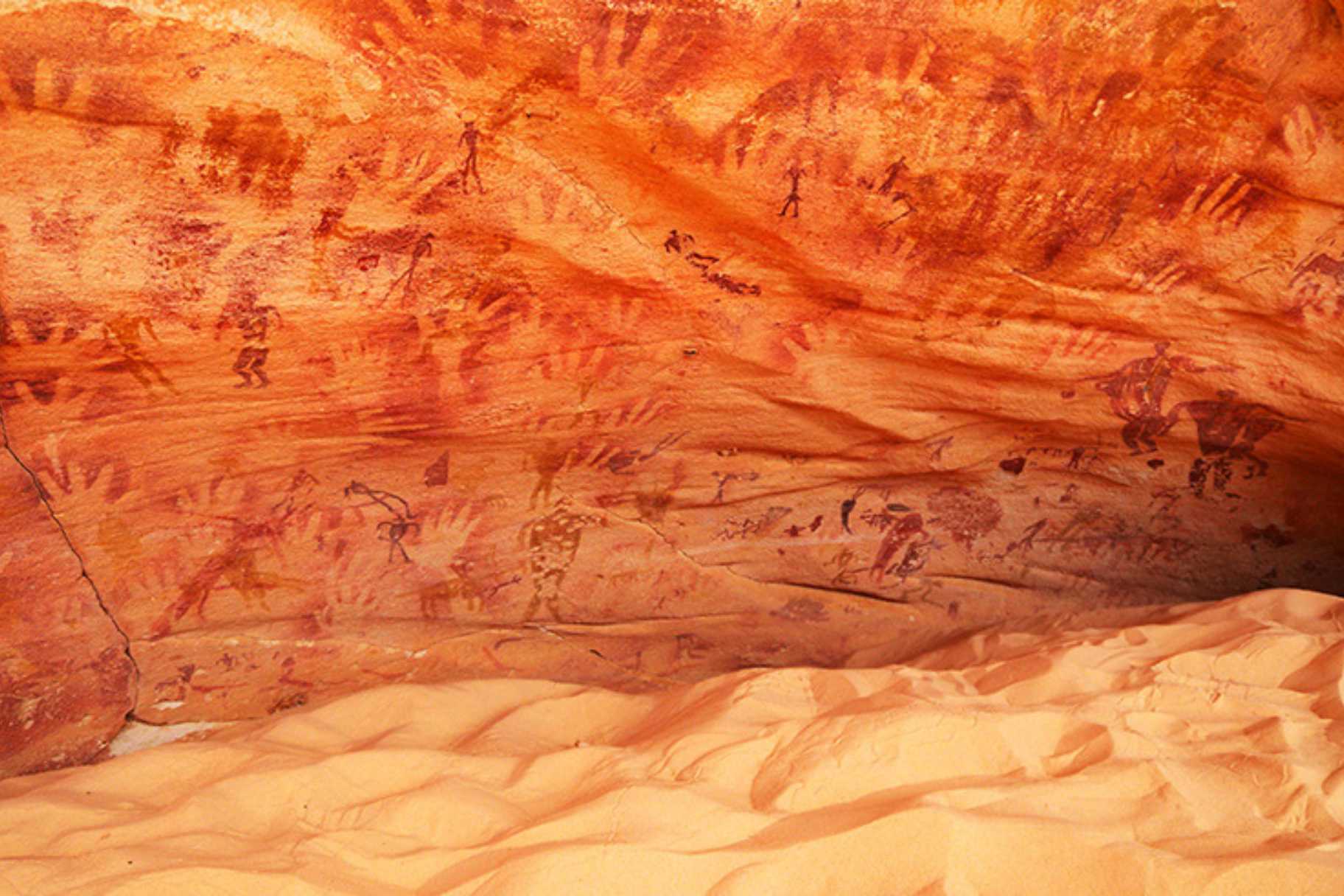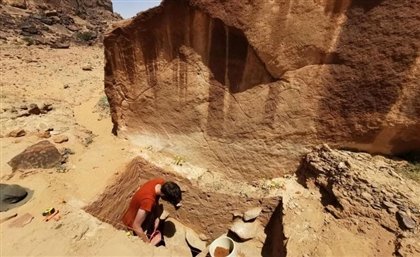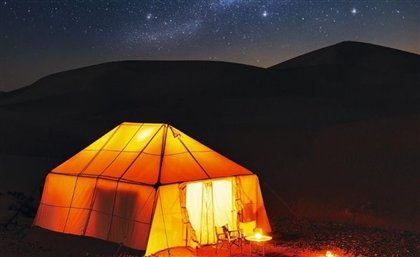Egypt’s ‘Cave of Beasts’ Holds the Haunting Secrets of a Lost People
Deep in Egypt’s Western Desert, the Cave of Beasts brims with the secrets of humans now long gone.

The first thing to know about the Cave of Beasts is that reaching it is no small feat.
-756a2030-c2c0-4913-81b0-5c8556a22098.jpg)
The Western Desert of Egypt does not accommodate visitors easily, and Wadi Sura—where the cave is located—stretches deep into a landscape that, for millennia, has rejected human habitation. The heat is unrelenting, and the sand moves in ways that disorient even seasoned desert travellers. But somewhere at the southwestern base of the Gilf Kebir plateau, near the borders of Libya and Sudan, there is a cave unlike any other. Inside, preserved in pigments that have clung to the rock walls for over 7,000 years, is the immutable evidence of human creativity and ingenuity.
-8ca93162-fb13-44b3-9e93-6527e582f0cd.jpg)
Discovered in 2002 by an Egyptian-Italian team led by Massimo Foggini and Ahmed Mestikawi, the Cave of Beasts—also referred to as Wadi Sura II—holds over 5,000 figures painted in red, yellow, white, and black. Some of them are unmistakable: human figures in various stances, animals that almost seem to gallop across the stone, scenes that suggest movement, story, perhaps even ritual. Others defy immediate explanation. There are creatures with human bodies but animal heads, others that lack heads entirely. Hundreds of hand and foot stencils punctuate the space, but not all of them are human. Some are so different in shape that researchers have suggested they might have been made using the hands of monitor lizards, a detail that complicates—and deepens—the mystery of the site.
-058696c0-b862-465f-9cb9-c7104abc1d08.jpg)
The significance of the Cave of Beasts extends beyond its artistic breadth. These images, left by a culture whose name remains unknown, suggest a way of life that is both familiar and alien. At the time these paintings were made, the Sahara was not the dry and inhospitable landscape it is today. It was humid, with lakes and vegetation—in other words: an environment that welcomed human settlement. Evidence of a lake at the base of the cave supports this, though whatever civilisation once thrived there was eventually forced to leave. Around 6,000 years ago, the climate shifted, the rains ceased, and the desert claimed what remained. It was not the first time the Sahara had transformed, nor would it be the last, but the Cave of Beasts seems barely concerned with the seismic natural forces changing everything around it.
-5cbca8fe-63b0-41b3-98a5-cf9f06862804.jpg)
Some of the figures depicted across the cave’s walls, especially the therianthropic ones, suggest a mythology that is now lost to time. Were these deities? Spirits? Symbols of transformation? The presence of acephalic figures raises questions that have no simple answers. The Cave of Beasts is often compared to the nearby Cave of Swimmers, a site made famous by its depiction in The English Patient as the place where Count Laszlo and nurse Hana fall madly in love. But where the swimmers are thought to represent early ideas of floating or drowning, the Beasts elude such straightforward interpretation.
-c7d3e599-5987-473b-85bb-ae57a6cb7e1d.jpg)
Over the years, researchers have worked to document and preserve the cave, recognizing its importance as one of the most significant prehistoric sites in Africa. In 2010, a team from the University of Cologne conducted an in-depth study, attempting to analyse the meaning and chronology of the paintings. But some things resist excavation. Much to the chagrin of historians, the cave does not leave any tangible explanation for what was left behind. And even that is incomplete. What these people believed, what stories they told—these things remain locked in stone, unchanged, perpetually unyielding.
-c373a5f1-7058-420f-ba32-a9f3ecefe3fd.jpg)
To reach the Cave of Beasts today requires careful planning. The journey is long, and the conditions harsh, but for those who make it, there is the rare chance to stand before something ancient, something that predates even our most ancient of documented civilisations. If nothing else compels you to make the journey, let it be this—seven thousand years ago, someone stood in that cave and left behind a message. What it means is still unknown. But if you go, if you stand where they once stood, you might be the one to finally listen.
- Previous Article Zayed Sustainability Prize Opens Submissions for 2026 Cycle
- Next Article Uncover Sohag’s Colourful History Through These 7 Stunning Sites



























